
Consumer Insights
Uncover trends and behaviors shaping consumer choices today
Procurement Insights
Optimize your sourcing strategy with key market data
Industry Stats
Stay ahead with the latest trends and market analysis.
The Expert Market Research report, titled “Exterior Lantern Manufacturing Plant Project Report 2026 Edition: Industry Trends, Capital Investment, Price Trends, Manufacturing Process, Raw Materials Requirement, Plant Setup, Operating Cost, and Revenue Statistics” includes various aspects that are critical for establishing an exterior lantern plant. These include infrastructure requirements, transportation requirements, utility specifications, and financial and economic analysis, among others.
The demand for exterior lanterns is increasing due to rising need for energy-efficient lighting solutions and the growing trend of outdoor living spaces. As consumers and municipalities focus on reducing energy consumption and carbon footprints, there is a significant shift towards energy-efficient lighting options. For example, LED technology in exterior lanterns can consume up to 50% less energy compared to traditional incandescent bulbs. In fact, LEDs typically have a luminaire efficacy rating (LER) of over 100 lumens per watt (lm/W), with some high-performance models achieving over 200 lm/W. This efficiency not only lowers utility bills but also contributes to reduced greenhouse gas emissions. The trend of enhancing outdoor living areas has also contributed to the increased demand for exterior lanterns. In 2024, it is estimated that over 70% of homeowners are investing in outdoor improvements, including patios and gardens designed for entertaining. Well-designed outdoor lighting enhances safety and ambiance, making these spaces more inviting for social gatherings. The aesthetic appeal of stylish lanterns complements landscaping and outdoor decor, further driving their popularity.
Other elements to consider while establishing an exterior lantern plant include raw material sourcing, workforce planning, and packaging. The production of exterior lanterns relies on several key raw materials, primarily die-cast aluminum, stainless steel, fibreglass, and glass or polycarbonate. Die-cast aluminum is commonly used for the body of exterior lanterns due to its excellent weather resistance and ability to withstand extreme temperatures and humidity. Stainless steel is favoured for its corrosion resistance, making it suitable for contemporary designs that can reflect sunlight beautifully. Fibreglass is increasingly used as it can be moulded into various shapes, allowing for creative designs while being resistant to fading and deterioration from UV exposure. Finally, glass or polycarbonate is typically used for the diffusers in exterior lanterns. These materials ensure that the final product meets functional requirements for outdoor lighting solutions.
Moreover, to help stakeholders determine the economics of an exterior lantern plant, project funding, capital investments, and operating expenses are analyzed. Projections for income and expenditure, along with a detailed breakdown of fixed and variable costs, direct and indirect expenses, and profit and loss analysis, enable stakeholders to comprehend the financial health and sustainability of a business. These projections serve as a strategic tool for evaluating future profitability, assessing cash flow needs, and identifying potential financial risks.
An exterior lantern is a decorative and functional lighting fixture designed for outdoor use, often illuminating pathways, gardens, and entryways. Typically made of metal or glass, these lanterns can house candles, oil lamps, or electric bulbs. Use of lanterns date back to ancient times, serving as essential light sources. In 1417, London mandated that homes display lanterns outdoors during winter nights for public safety. By the 17th century, cities like Paris began installing lanterns in streets, significantly improving nighttime visibility. As of 2024, modern designs incorporate energy-efficient LED technology. Exterior lanterns not only serve as light sources but also contribute to the aesthetic charm of outdoor spaces.
Exterior lanterns are constructed from materials such as die-cast aluminum, stainless steel, or fiberglass, which are designed to withstand harsh weather conditions. For instance, die-cast aluminum can resist corrosion and is about 30% lighter than traditional metals, making it easier to handle. Fiberglass lanterns are particularly valued for their lightweight nature and shock resistance, with a tensile strength that can be up to 5 times greater than that of steel. Additionally, exterior lanterns come in various designs, allowing for customisation in styles ranging from classic to contemporary.
The materials used in exterior lanterns often possess excellent corrosion resistance; for example, stainless steel can maintain its integrity even after exposure to moisture and salt, which is crucial in coastal areas. Brass lanterns can develop a patina over time, providing a protective layer against further corrosion. Furthermore, many materials used in these lanterns are fire-resistant; concrete components can withstand temperatures exceeding 1,000 degrees Fahrenheit.
The production process of exterior lanterns begins with raw material procurement, where essential materials such as aluminum, glass, and LED components are sourced. Following this, material inspection takes place to verify that all materials meet the necessary quality standards and specifications. Next, in the material preparation stage, these materials are cut and shaped to the required dimensions. The process then moves to component manufacturing, where individual parts like casings, lenses, and electrical components are produced. Once all components are ready, they undergo assembly, where they are combined into the final lantern structure, including wiring and fixtures. After assembly, quality control testing is conducted. Once approved, the finished products are carefully packaged for shipment.

Read more about this report - REQUEST FREE SAMPLE COPY IN PDF
Key applications of exterior lantern include residential outdoor lighting, where homeowners increasingly seek lantern lights in outdoor gatherings and garden maintenance. Additionally, municipalities are investing in street and park lighting to enhance public safety; for instance, annual energy use for outdoor lighting in the U.S. was estimated at around 231.2 terawatt-hours (TWh), highlighting the critical role of effective illumination in urban planning. The rise of adventure tourism and outdoor recreational activities has also propelled demand for portable lighting solutions, as camping and hiking become more popular among millennials, contributing to a growing preference for energy-efficient options such as solar-powered lanterns. Furthermore, government initiatives promoting sustainable infrastructure are driving the adoption of smart lighting systems that integrate IoT technology.
A detailed overview of production cost analysis that evaluates the manufacturing process of exterior lantern is crucial for stakeholders considering entry into this sector. Furthermore, stakeholders can make informed decisions based on the latest economic data, technological innovations, production process, requirements of raw materials, utility and operating costs, capital investments by major players, pricing strategies, and profit margins. For instance, rising investment in urban infrastructure and smart city initiatives is leading to demand for exterior lanterns. In 2024, government programs worldwide are focusing on advanced lighting systems for streets, parks, and public spaces to enhance safety and energy efficiency. India’s Smart Cities Mission is integrating energy-efficient LED and solar lighting technologies into urban planning. Moreover, the European Union’s Green Cities Program is implementing smart lighting solutions that reduce energy consumption and light pollution. The increasing investment in urban infrastructure and smart city initiatives will significantly benefit makers of exterior lanterns by creating new opportunities for manufacturers to innovate and expand their product offerings.
Below are the sections that further detail the comprehensive scope of the prefeasibility report for an exterior lantern production plant:
Market Dynamics and Trends: Factors such as technological advancements are significantly affecting market conditions in the exterior lantern sector. Innovations in design and functionality have made modern exterior lanterns more appealing. Features such as solar-powered options and smart lighting systems with IoT connectivity are gaining traction. Solar lanterns can operate independently without electrical wiring, while smart systems allow users to control lighting remotely or adjust brightness based on real-time activity. These advancements also contribute to energy savings. Understanding these factors helps businesses align their production plans with demands and trends in the exterior lantern market.
Profiling of Key Industry Players: Leading manufacturers like BOPIN, Leboda Technology Co., Ltd., and Garden Light LED Co., Ltd. are included in the exterior lantern report. Recently, BOPIN has gained recognition for its innovative LED outdoor lighting solutions. Established in 2008, BOPIN has expanded its product range to include solar LED lights and streetlights, and has achieved multiple international certifications, including CE and RoHS. Leboda Technology Co., Ltd. also offers outdoor and garden lighting products. The company aims to provide high-performance solutions to customers across Europe, America, and Australia. Additionally, Garden Light LED Co., Ltd. has made a mark by creating high-quality, environmentally sensitive landscape lighting products in the USA. These manufacturers are responding to the increasing demand for energy-efficient exterior lanterns that enhance outdoor spaces while promoting sustainability.
Economic Analysis: Capital expenditure (CAPEX) analysis provides stakeholders the knowledge about required investments in advanced technologies, efficient machinery, and necessary infrastructure. Investing in high-capacity mixing equipment, such as a continuous mixer or high-shear mixer, can improve production efficiency by 20-30%. Investing in energy-efficient systems, such as combined heat and power (CHP) systems could reduce energy consumption by up to 30%, as these systems use waste heat from production processes to generate electricity and provide heating.
Fluctuations in exterior lantern prices are influenced by several key factors, particularly the costs of essential raw materials such as aluminum, glass, and LED components. The price of aluminum can be volatile, with recent increases exceeding 30% due to global supply chain disruptions and rising demand. Glass is also experiencing price variability based on production methods and transportation costs. Additionally, the demand for high-quality LED components has surged, but the ongoing semiconductor shortage has led to rising prices for these parts. Together, these raw materials significantly impact the pricing dynamics of exterior lanterns, making manufacturers sensitive to changes in material costs and market conditions.
Establishing an exterior lantern manufacturing facility requires a comprehensive financial investment that encompasses various elements critical to the project's success. The following sections detail these components:
Projected profit margins and effective product pricing strategies improve overall profitability. Manufacturers might target a profit margin of around 20-30%, achieved through strategic pricing based on raw material costs and prevailing market demand. Effective pricing strategies should consider fluctuations in raw material prices and competitive positioning within the market.
The establishment of an exterior lantern manufacturing facility must comply with various regulatory frameworks that govern production standards, particularly those related to safety, environmental impact, and energy efficiency. Key regulations include the Occupational Safety and Health Administration (OSHA) standards, which mandate that all electrical equipment, including lighting fixtures, be installed to reduce potential hazards and ensure employee safety. For instance, OSHA requires that lighting fixtures in manufacturing areas meet specific illumination levels, such as 750 lux for areas with machinery to ensure safe operations.
Additionally, adherence to the National Electrical Code (NEC) is crucial for ensuring safe installation practices for electrical systems. This includes proper grounding and placement of outlets and switches. The American National Standards Institute (ANSI) also provides guidelines that may influence design and manufacturing processes. Facilities must also comply with local ordinances regarding outdoor lighting to reduce light pollution and ensure that luminaire output does not exceed specified limits. Compliance with these regulatory frameworks is essential for ensuring safety, environmental responsibility, and operational efficiency in the production of exterior lanterns.
This prefeasibility report aims to equip potential investors and existing manufacturers with crucial insights to make informed decisions in the exterior lantern industry.




*While we strive to always give you current and accurate information, the numbers depicted on the website are indicative and may differ from the actual numbers in the main report. At Expert Market Research, we aim to bring you the latest insights and trends in the market. Using our analyses and forecasts, stakeholders can understand the market dynamics, navigate challenges, and capitalize on opportunities to make data-driven strategic decisions.*
Get in touch with us for a customized solution tailored to your unique requirements and save upto 35%!
Basic Plan
USD 5,699
USD 4,844
Get Startedtax inclusive*
Raw Material and Product Specification, Raw material consumption, Process flow diagram
Machinery Cost, Working Capital
Utilities consumption, Operating cost, Overheads, Financing Charges, GSA , Packaging
Premium Plan
USD 6,799
USD 5,779
Get Startedtax inclusive*
Key Processing Information, Capital Investment Analysis, Conversion Cost Analysis
Raw material consumption and prices, Utilities consumption breakdown, By-Product Credit, Labour Charges Breakdown
Land and Site Cost, Equipment Cost, Auxiliary Equipment Cost, Contingency, Engineering and Consulting Charges
Enterprise Plan
USD 8,899
USD 7,564
Get Startedtax inclusive*
Key Processing Information, Capital Investment Analysis, Conversion Cost Analysis, Variable Cost Breakdown, Investing Cost Breakdown,
Breakdown of machinery cost by equipment, Auxiliary Equipment Cost, Piping, Electrical, Instrumentation
Cost of Construction, Plant Building, Site Development Charges
Land Cost, Development Charges
Dynamic Spreadsheet (Unlocked)
*Please note that the prices mentioned below are starting prices for each bundle type. Kindly contact our team for further details.*

Basic Plan
USD 5,699
USD 4,844
Key Processing Information
Raw Material and Product Specification, Raw Material Consumption, Process Flow Diagram
Capital Investment Analysis
Machinery Cost, Working Capital
Conversion Cost Analysis
Utilities Consumption, Operating Cost, Overheads, Financing Charges, GSA , Packaging

Premium Plan
USD 6,799
USD 5,779
All Contents of Basic Report
Key Processing Information, Capital Investment Analysis, Conversion Cost Analysis
Variable Cost Breakdown
Raw Material Consumption and Prices, Utilities Consumption, Breakdown By-Product Credit, Labour Charges Breakdown
Investing Cost Breakdown
Land and Site Cost, Equipment Cost, Auxiliary Equipment Cost, Contingency, Engineering and Consulting Charges

Enterprise Plan
USD 8,899
USD 7,564
Includes all Report Content
Key Processing Information, Capital Investment Analysis, Conversion Cost Analysis, Variable Cost Breakdown, Investing Cost Breakdown,
Equipment Cost Breakdown
Breakdown of Machinery Cost By Equipment, Auxiliary Equipment Cost, Piping, Electrical, Instrumentation
Land and Construction Cost Details
Land Cost, Development Charges, Cost of Construction, Plant Building, Site Development Charges
Dynamic Excel Cost Model
Dynamic Spreadsheet (Unlocked)
*Please note that the prices mentioned below are starting prices for each bundle type. Kindly contact our team for further details.*
Flash Bundle
Number of Reports: 3
20%
tax inclusive*
Small Business Bundle
Number of Reports: 5
25%
tax inclusive*
Growth Bundle
Number of Reports: 8
30%
tax inclusive*
Enterprise Bundle
Number of Reports: 10
35%
tax inclusive*
How To Order

Select License Type
Choose the right license for your needs and access rights.

Click on ‘Buy Now’
Add the report to your cart with one click and proceed to register.

Select Mode of Payment
Choose a payment option for a secure checkout. You will be redirected accordingly.
Gain insights to stay ahead and seize opportunities.
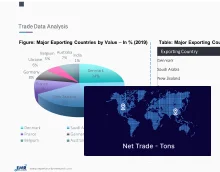
Get insights & trends for a competitive edge.
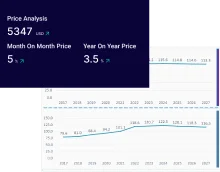
Track prices with detailed trend reports.
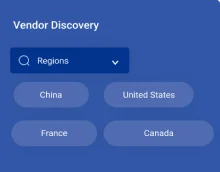
Analyse trade data for supply chain insights.
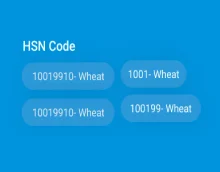
Leverage cost reports for smart savings
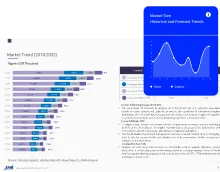
Enhance supply chain with partnerships.
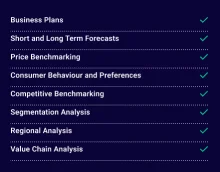
Connect For More Information
Our expert team of analysts will offer full support and resolve any queries regarding the report, before and after the purchase.
Our expert team of analysts will offer full support and resolve any queries regarding the report, before and after the purchase.
We employ meticulous research methods, blending advanced analytics and expert insights to deliver accurate, actionable industry intelligence, staying ahead of competitors.
Our skilled analysts offer unparalleled competitive advantage with detailed insights on current and emerging markets, ensuring your strategic edge.
We offer an in-depth yet simplified presentation of industry insights and analysis to meet your specific requirements effectively.
Share